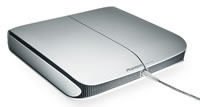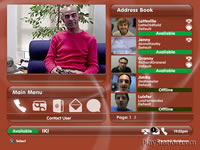Admittedly, we’d be a lot more excited about this had the last two films been any good, but Monolith Production’s new massively multiplayer online role-playing game (MMORPG) based on the Matrix series of films is set to go public in November. The new game will be published by Warner Bros. Interactive and Sega, Monolith have already produced two respectable titles based on licenses: No-one Lives Forever and TRON2.0.
Set directly after the Martrix: Revolutions, Matrix Online (MxO) boasts a story line written by the Wachowski brothers. Mind you, so did Enter the Matrix and look how good that was. The MMORPG is meant to be seen as a fourth instalment, rather like Enter the Matrix being another part of the second film.
MxO is set in a city environment and incorporates the films’ distinctive martial arts fighting theme, but players will also be able to command their own hovercraft and form factions for and against other groups. Bullet time will be incorporated in the game play as apparently there are some people out there who don’t think it’s been completely overused.
Characters’ appearances can be completely customised, so you don’t have to worry about turning up at an event wearing the same sunglasses and trench coat as everyone else.
“Ability codes” seem intriguing, where players download sources of information to create Matrix items and learn special abilities. If you don’t fancy PvP (player versus player combat), then you can create Matrix code and distribute it in the game.
We’ll give it a try when it appears and let you know how we get on.
 We have covered the on/off, is it real, is it vapour history of the Phantom Console a number of times.
We have covered the on/off, is it real, is it vapour history of the Phantom Console a number of times. Phantom Lapboard, which they claim gives easy control over the keyboard and mouse even when sitting on a couch.
Phantom Lapboard, which they claim gives easy control over the keyboard and mouse even when sitting on a couch. Slowly and steadily, Sony is building on the usage and application of the ground-breaking EyeToy webcam add-on for their Playstation 2. The latest announcement is EyeToy:Chat, which expands the tool into a far more social area.
Slowly and steadily, Sony is building on the usage and application of the ground-breaking EyeToy webcam add-on for their Playstation 2. The latest announcement is EyeToy:Chat, which expands the tool into a far more social area. Clearly safety will be a big concern for parents and Sony’s London Studios, the original inventors of EyeToy, who developed Chat and have spent considerable efforts in trying to make the product as safe as possible. User will need to register with Playstation Net to use it and will only be bale to take part once they enter the PIN that is send to their home address. With Chat rooms being moderated and a clear processes for grievances Sony feels “‘EyeToy: Chat’ is one of the safest communication packages available on any system on the market.”
Clearly safety will be a big concern for parents and Sony’s London Studios, the original inventors of EyeToy, who developed Chat and have spent considerable efforts in trying to make the product as safe as possible. User will need to register with Playstation Net to use it and will only be bale to take part once they enter the PIN that is send to their home address. With Chat rooms being moderated and a clear processes for grievances Sony feels “‘EyeToy: Chat’ is one of the safest communication packages available on any system on the market.”